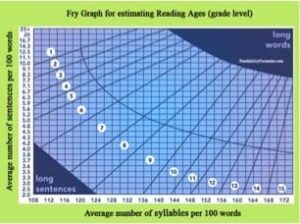OnTESOL graduate in the United Arab Emirates explains how he adapted authentic material to teach receptive skills in IELTS preparation courses. The first part of this blog focuses on teaching the IELTS listening test and the second part focuses on teaching the IELTS reading test.
Recommended for the UAE: The 168-hour Hybrid TEFL Certificate will prepare you to teach English to adults and young learners. Add the 20-hour Teaching IELTS specialist to your TEFL course for only $100!
Teaching the IELTS Listening Test with Your Own Scripts
There are many reasons to develop your own listening resources, whether for assessment or instructional purposes, to teach the IELTS listening test. Last year I worked as an assessment developer for a secondary technical school in the UAE, where the goal of the curriculum was for each student to achieve at least an IELTS band 5.0 upon completion of the program, which would satisfy the requirement for university admissions or direct employment in many local industries. Our grade 12 ESL course was based on an IELTS curriculum, so course content centered on mastering the skills for achieving the target band score. For this reason, the various tests the assessment team created were modeled on the official IELTS exam.
There are ample free resources online; however, to ensure the integrity of our assessments we could not use existing resources in case our students had already been exposed to them. For this reason, our materials had to be developed in-house, including our listening tests, which we scripted and wrote the questions for as well as recorded and edited ourselves using GarageBand.
Here are four things to consider when recording your own scripts for the IELTS listening test:
1- Deconstructing the IELTS Test:
The IELTS listening test is structured and staged in a very specific way. By breaking down the structural features of the actual test, you can then develop your own following the same structural model. This in turn ensures greater alignment between what you provide your candidates and what they will experience in the actual test.
2- Integration of Target Content:
Whether for instructional or for assessment purposes, it pays to develop your own scripts to ensure greater integration of the lexical items and grammatical concepts you have been covering with your candidates. This is particularly important when working with lower-level candidates for whom the recycling of target vocabulary or improved grammatical awareness is more vital for achieving a higher band score.
3- Adapting to Candidates’ Needs:
Last year, we used Complete IELTS Bands 4-5 from Cambridge University Press. This is a great textbook; however, the leveling of the content is predicated on candidates’ equal development in the four main language strands. This is not always the case in places like the United Arab Emirates, where candidates tend to be more competent in their speaking and less so in the other strands.
Indeed many language learners struggle with disparities in their performance in the different strands. For this reason, you may have to develop your own listening materials to make sure they’re suitable for your candidates’ level.
4- Fostering Interest and Motivation:
Lastly, especially when working with younger candidates for whom motivation might be lacking, developing your own materials allows you to tailor the content to their interests and aspirations, which in turn will help foster improved motivation.
Oftentimes the less relevant the content the less interested and motivated your candidates will be. For example, the Complete IELTS series covers certain academic topics that may not appeal to teenaged boys, for example, in a vocational education setting. By developing your own listening materials you can create content geared towards their personal and career interests.
Adapting Authentic Texts to Teach IELTS Reading
Just as there are many reasons to use authentic texts when teaching IELTS, there is an equal number of considerations when choosing which texts to use. The most important consideration is whether the text is suitable for your candidates’ proficiency level.
Reading requires a lot of energy, especially when dealing with unfamiliar vocabulary and structures. The greater the gap between your candidates’ level and the level required means the greater the chance they will lose motivation and focus, which is why sourcing authentic texts can be so challenging—maybe you find the perfect article but the text’s language is too sophisticated.
The time it takes to source a text that ticks all the boxes might ultimately put you off using authentic texts altogether. Before giving up, consider modifying a text to achieve your target level, which may ultimately take less time than finding that perfect text. Here are four steps I have used for vetting and developing the texts for candidates targeting an IELTS band 5.0:
1- Establishing the Target:

Next, I used Fry’s Readability Graph to establish the equivalent grade-level readability (for a native speaker) of these texts. The readings averaged a total of 450 words and band 5.0 readability was roughly equivalent to a native speaker reading at grade 10. I based my understanding of the suitability of the vocabulary and grammatical structures on the CEFR descriptors for a B1+ language learner, which is roughly equivalent to IELTS band 5.0.
2- Vetting the Text:
Next, I searched online for texts on my desired topic that roughly aligned with my sense of what my candidates could manage. Very rarely would I find a perfect match, but simply copying and pasting the text into Fry’s Readability Graph allowed me to quickly determine how far off my target readability each text was. If the text was too far off but I still wanted to use it, then I would set about modifying it until I achieved the target.
3- Modifying the Text:
Fry’s Readability Graph is quite straightforward; it looks at two factors—the average number of sentences and the average word length per every 100 words of text. The longer the sentences and the longer the words means the higher the grade level, so modifying a text to achieve lower grade-level readability is simply a matter of simplifying its vocabulary and grammatical structures.
I would then copy and paste the text into MS Word and set about breaking up longer, more complex sentence structures and choosing simpler alternatives to lengthy, more complex vocabulary, incorporating our target words and grammatical concepts as much as possible. Once that was complete, I would plunk the text back into Fry’s Readability Graph to determine if I had reached the desired readability.
4- Assessing for Suitability:
The last step in the process is assessing how your candidates managed with the modified text and consider ways in which it may require further development.
A little challenging is okay, especially as you want your IELTS candidates to be relying on other skills essential for success in the IELTS exam beyond 100% comprehension, such as deriving meaning from context or using keywords when scanning for detailed information. Once you’ve honed your tools for vetting and developing authentic texts and seen positive results with your candidates, then you’ll be sure to produce more effective lessons to help them prepare for the IELTS reading test.





